Seth Bassetti
Emulating the Global Change Analysis Model with Deep Learning
Dec 12, 2024



Abstract:The Global Change Analysis Model (GCAM) simulates complex interactions between the coupled Earth and human systems, providing valuable insights into the co-evolution of land, water, and energy sectors under different future scenarios. Understanding the sensitivities and drivers of this multisectoral system can lead to more robust understanding of the different pathways to particular outcomes. The interactions and complexity of the coupled human-Earth systems make GCAM simulations costly to run at scale - a requirement for large ensemble experiments which explore uncertainty in model parameters and outputs. A differentiable emulator with similar predictive power, but greater efficiency, could provide novel scenario discovery and analysis of GCAM and its outputs, requiring fewer runs of GCAM. As a first use case, we train a neural network on an existing large ensemble that explores a range of GCAM inputs related to different relative contributions of energy production sources, with a focus on wind and solar. We complement this existing ensemble with interpolated input values and a wider selection of outputs, predicting 22,528 GCAM outputs across time, sectors, and regions. We report a median $R^2$ score of 0.998 for the emulator's predictions and an $R^2$ score of 0.812 for its input-output sensitivity.
DiffESM: Conditional Emulation of Temperature and Precipitation in Earth System Models with 3D Diffusion Models
Sep 17, 2024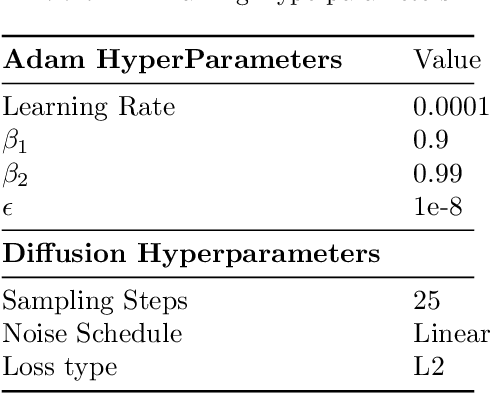
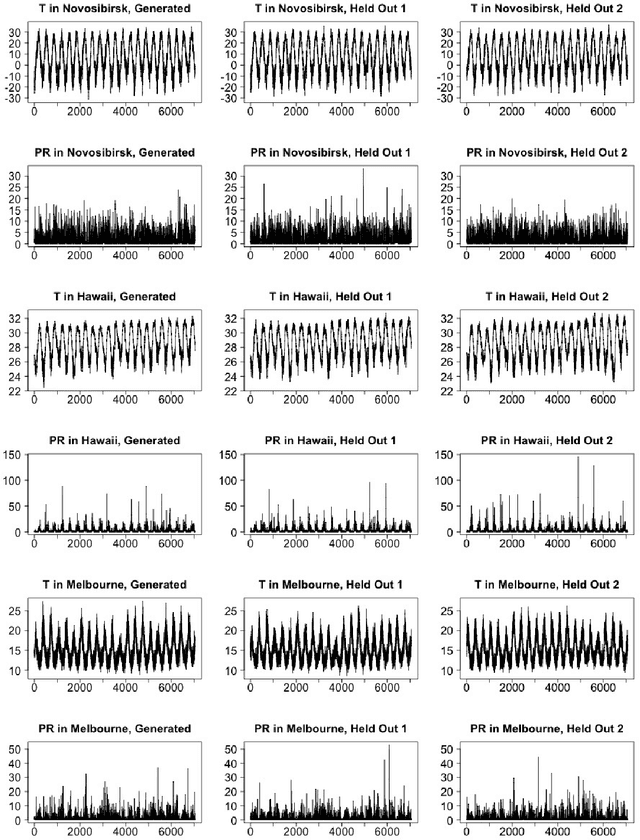
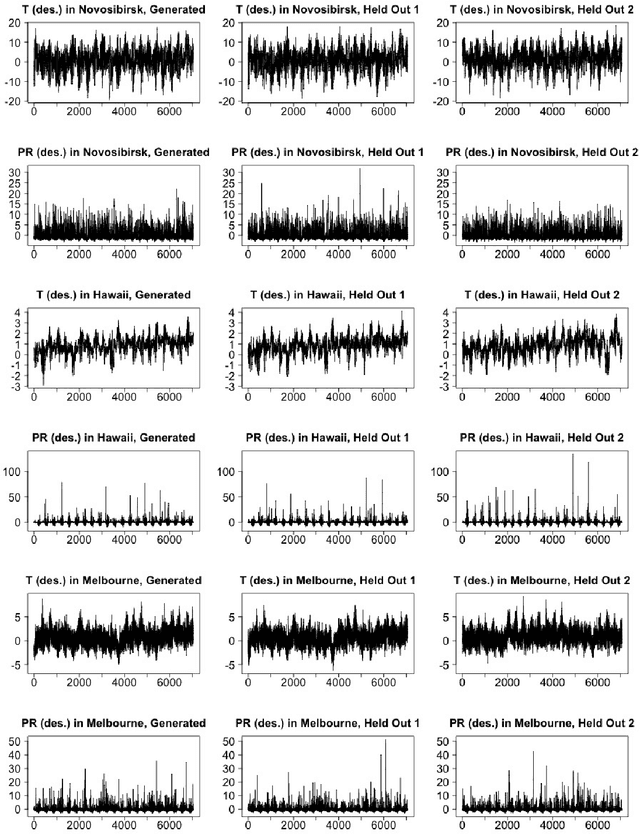
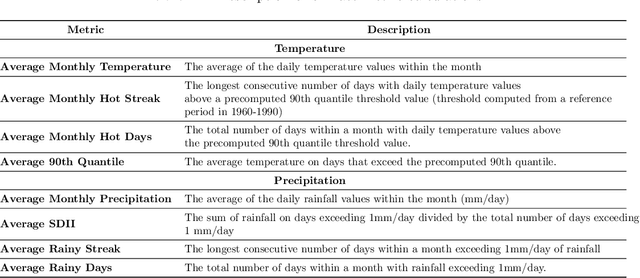
Abstract:Earth System Models (ESMs) are essential for understanding the interaction between human activities and the Earth's climate. However, the computational demands of ESMs often limit the number of simulations that can be run, hindering the robust analysis of risks associated with extreme weather events. While low-cost climate emulators have emerged as an alternative to emulate ESMs and enable rapid analysis of future climate, many of these emulators only provide output on at most a monthly frequency. This temporal resolution is insufficient for analyzing events that require daily characterization, such as heat waves or heavy precipitation. We propose using diffusion models, a class of generative deep learning models, to effectively downscale ESM output from a monthly to a daily frequency. Trained on a handful of ESM realizations, reflecting a wide range of radiative forcings, our DiffESM model takes monthly mean precipitation or temperature as input, and is capable of producing daily values with statistical characteristics close to ESM output. Combined with a low-cost emulator providing monthly means, this approach requires only a small fraction of the computational resources needed to run a large ensemble. We evaluate model behavior using a number of extreme metrics, showing that DiffESM closely matches the spatio-temporal behavior of the ESM output it emulates in terms of the frequency and spatial characteristics of phenomena such as heat waves, dry spells, or rainfall intensity.
Diffusion-Based Joint Temperature and Precipitation Emulation of Earth System Models
Apr 12, 2024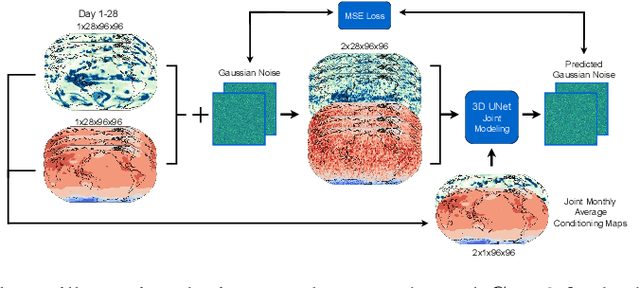



Abstract:Earth system models (ESMs) are the principal tools used in climate science to generate future climate projections under various atmospheric emissions scenarios on a global or regional scale. Generative deep learning approaches are suitable for emulating these tools due to their computational efficiency and ability, once trained, to generate realizations in a fraction of the time required by ESMs. We extend previous work that used a generative probabilistic diffusion model to emulate ESMs by targeting the joint emulation of multiple variables, temperature and precipitation, by a single diffusion model. Joint generation of multiple variables is critical to generate realistic samples of phenomena resulting from the interplay of multiple variables. The diffusion model emulator takes in the monthly mean-maps of temperature and precipitation and produces the daily values of each of these variables that exhibit statistical properties similar to those generated by ESMs. Our results show the outputs from our extended model closely resemble those from ESMs on various climate metrics including dry spells and hot streaks, and that the joint distribution of temperature and precipitation in our sample closely matches those of ESMs.
DiffESM: Conditional Emulation of Earth System Models with Diffusion Models
Apr 23, 2023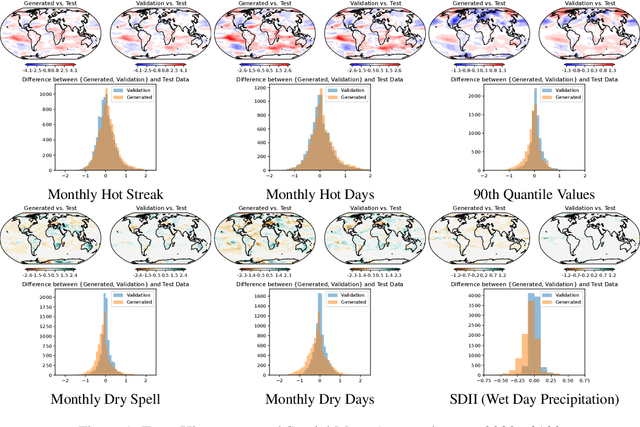
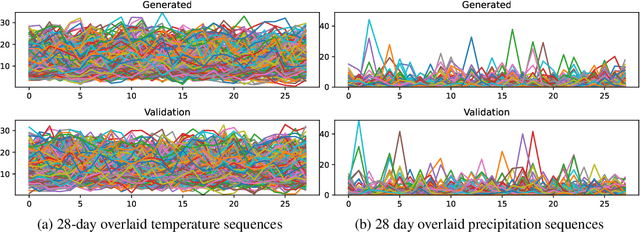
Abstract:Earth System Models (ESMs) are essential tools for understanding the impact of human actions on Earth's climate. One key application of these models is studying extreme weather events, such as heat waves or dry spells, which have significant socioeconomic and environmental consequences. However, the computational demands of running a sufficient number of simulations to analyze the risks are often prohibitive. In this paper we demonstrate that diffusion models -- a class of generative deep learning models -- can effectively emulate the spatio-temporal trends of ESMs under previously unseen climate scenarios, while only requiring a small fraction of the computational resources. We present a diffusion model that is conditioned on monthly averages of temperature or precipitation on a $96 \times 96$ global grid, and produces daily values that are both realistic and consistent with those averages. Our results show that the output from our diffusion model closely matches the spatio-temporal behavior of the ESM it emulates in terms of the frequency of phenomena such as heat waves, dry spells, or rainfall intensity.
 Add to Chrome
Add to Chrome Add to Firefox
Add to Firefox Add to Edge
Add to Edge